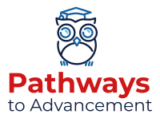Many organizations provide invaluable resources such as professional skills training and courses for their organizations. However, these resources often go unused because they don’t address the critical skills training that’s required for employee development. How can you prevent this from happening at your company? To develop the essential career skills your employees need to succeed, you typically need to start with a solid endorsement from leadership. This approach helps you make the most significant impact. You can build justification for ongoing training programs by keeping track of improved business performance and calculating the return on investment.
Bridge the Gap Between Employer and Employee Needs
Instead of basing your program on trending topics that might work for another business, figure out exactly what skills your employees need by conducting a detailed task analysis for all roles in your company. Reviewing past program feedback, you may find that previous performance gaps have not been filled as intended or there have been setbacks. Behavior changes that result in better business outcomes typically require constant reinforcement. By making adjustments in your environment, setting appropriate expectations, and modeling the behavior you want, you can make a difference without requiring formal training.

What are the Critical Skills that Employees Need?
Involving managers who know what skills employees need to develop can build a program that meets learners’ needs right when they need enrichment. It would be best if you also received input from learners whose motivation may differ from their managers. Critical skills that enable success in the workplace, regardless of function, usually center around personal accountability, communication, and problem-solving.
Personal accountability
Your employees should be able to assess their performance against established goals and milestones. When employees show personal responsibility for getting their work done with a positive attitude, they tend to appear for work on time, follow through on initiatives, and maintain productivity.
Communication
Listening, presenting, and influencing represent communication skills required to build strong teams. Cooperating and collaborating to achieve shared goals becomes more manageable when people recognize the benefits of developing and maintaining productive personal relationships.
Problem-solving
Identifying risks and considering multiple options when making reasoned business judgments requires discipline. To ensure your employees can adequately assess situations, provide access to best practices.

How to Promote Your Employee Development Program
To promote your employee skill development program, develop a campaign that follows these guidelines:
1. Align Professional Development Programs with Business Objectives
If possible, link course completion to potential promotions or job gains. This strategy motivates employees to pay attention to your learning opportunities and initiatives.
2. Engage Your Leaders
Engage leaders to introduce learning opportunities and make the connection between professional development and organizational success. For example, if leaders want employees to focus on customer needs instead of internal policies and procedures, you should develop and deliver training on how to build customer relationships.
3. Create Employee Growth Plans
Creating employee growth plans is a great way to hold employees accountable and keep them motivated. It’s also a great way to show management that you’re invested in your employees’ growth and the company’s growth and overall health.
4. Establish Program Targets
Establish targets for program completion. Instead of releasing a course and hoping people complete it, set a timeline for completion, and follow up with managers and employees if targets don’t get met.
5. Understand Your Audience
Assess changes needed for your specific audience. Don’t assume that everyone in the organization operates at the same level of understanding and expertise. When you provide generic training, you get generic results. You may find that a traditional course may not produce the results your particular company needs.

6. Build in Employee Development Training Time
Once you target the right population to train, ensure trainees have time set aside to complete the skills training and apply what they’ve learned immediately in a tangible way. For example, deliver the training in short segments that people can complete in just 30 minutes a week.
7. Set Expectations
Set expectations so that stakeholders and participants alike understand what’s required. Ensure that managers support the learning effort and that everyone is on the same page.
8. Review Program Results
Collect data about the learning program usage and application back on the job. Communicate results and cascade the message throughout the organization. If the intended results don’t happen, adjust the program rollout.
Key Takeaway about Employee Development Programs
When you want success for your team, ensure they have the skills to work in a coordinated fashion to pursue and achieve goals that allow everyone to succeed personally while ensuring better business outcomes. Curating a selection of professional development skills courses and supporting learning solutions takes effort, but the long-term impact ensures your company’s bright future.



